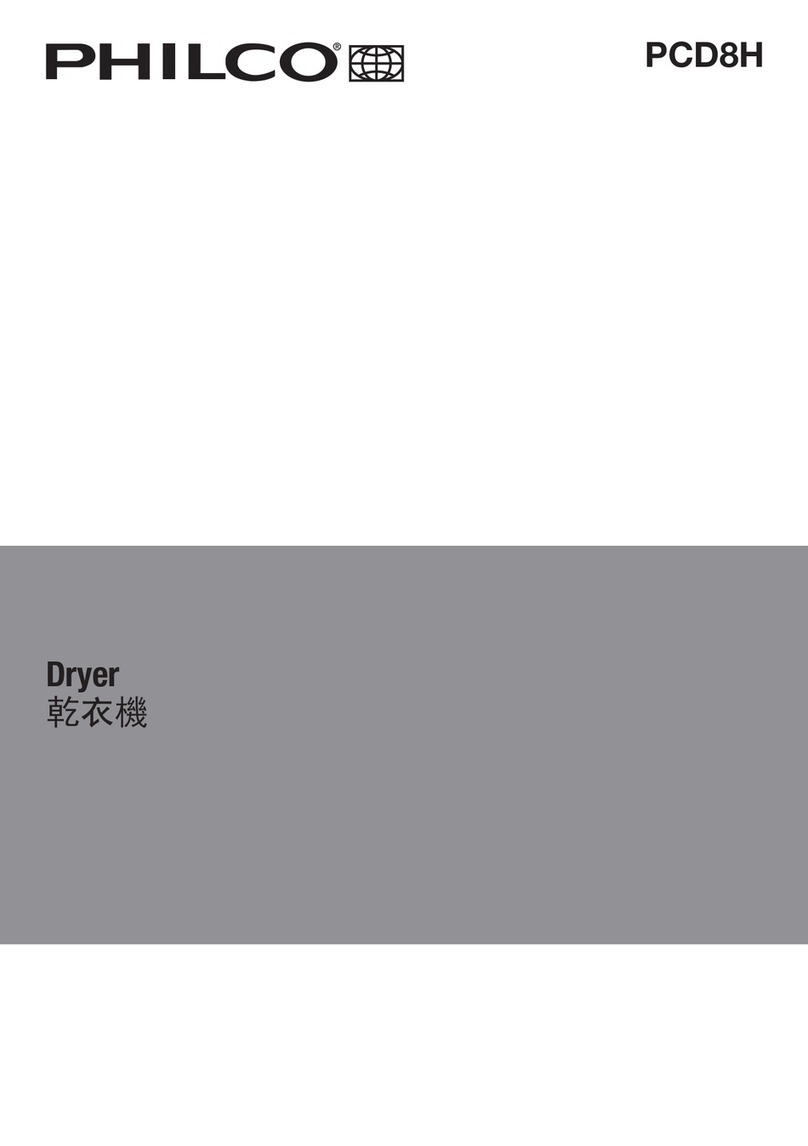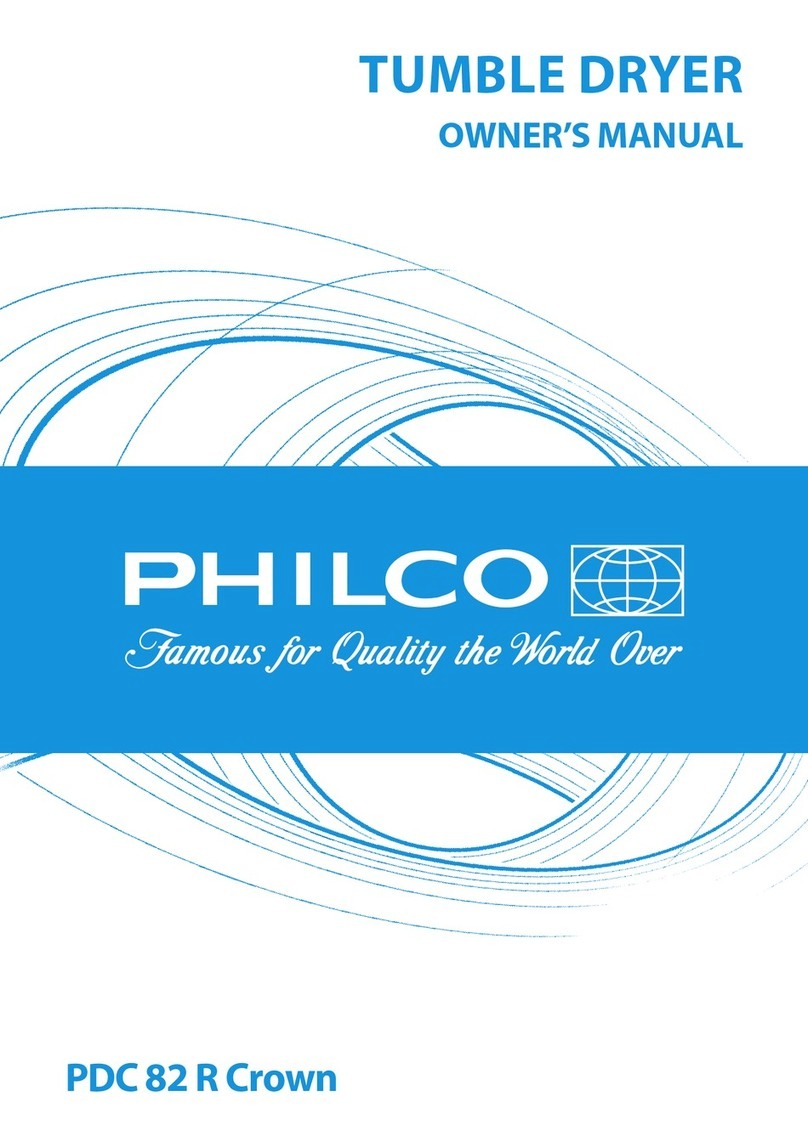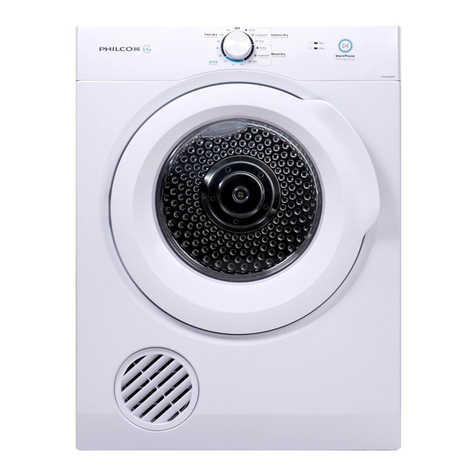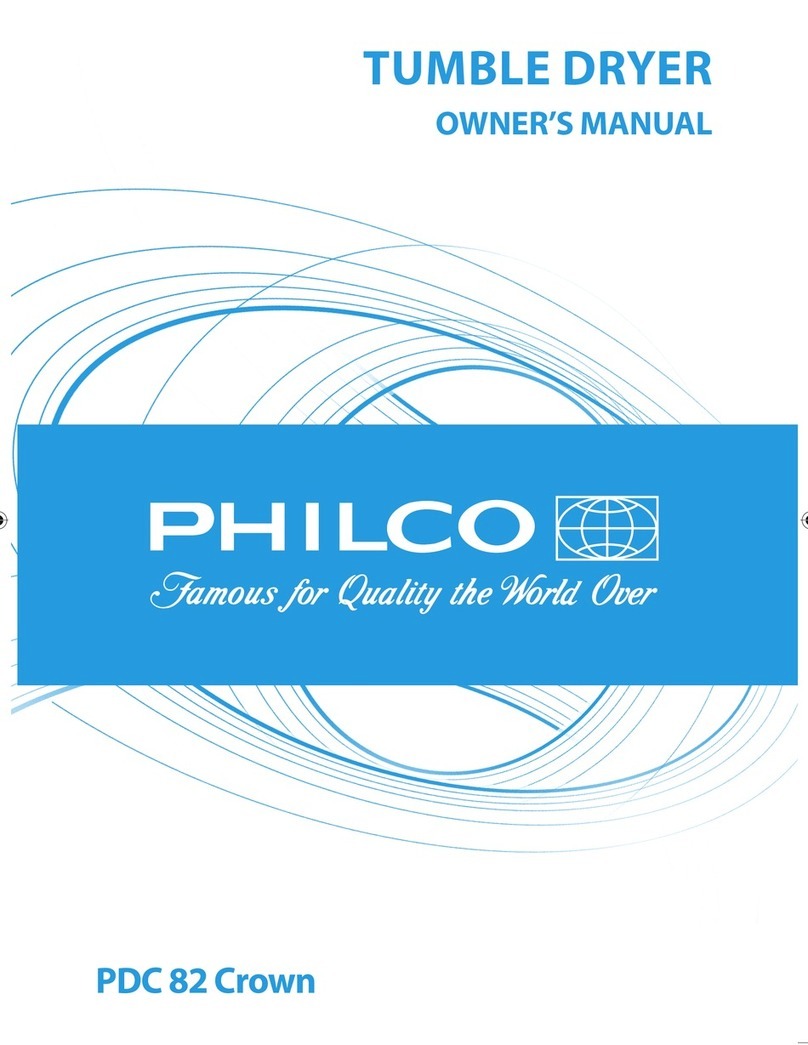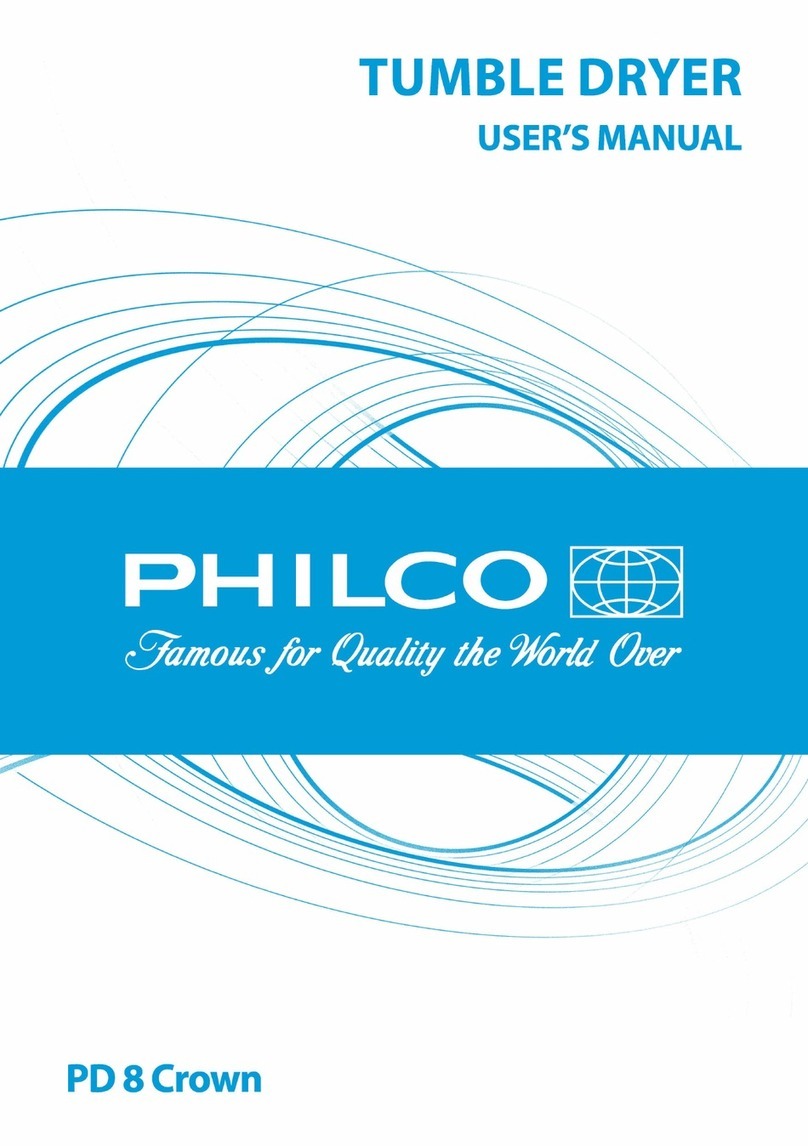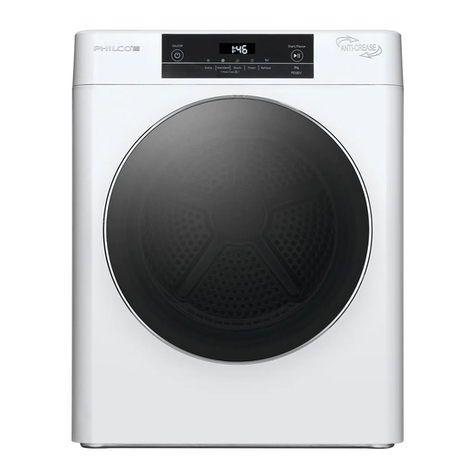
5
1.4 Fire Hazards
Some fabrics are not suitable for tumble
drying. The following MUST NOT be
placed in your dryer due to the risk of a
fire or an explosion:
• Items that have been spotted or soaked
with vegetable oil, cooking oil, suntan
oil, linseed oil, salad oil, lubrication oil,
or grease. Oil-affected items can ignite
spontaneously, especially when exposed
to heat sources such as in a tumble
dryer. The items become warm, causing
an oxidation reaction in the oil.
Oxidation creates heat. If heat cannot
escape, the items can become hot
enough to ignite. Pilling, stacking, or
storing oil-affected items can prevent
heat from escaping and create a fire
hazard. If it is unavoidable that fabrics
that contain vegetable or cooking oil,
or have been contaminated by hair
care products be placed in a tumble
dryer, they should first be washed in
hot water with extra detergent - this will
reduce, but not eliminate the hazard.
The final part of the tumble dryer cycle
occurs without heat (The cooling cycle)
to ensure that the items are left at the
temperature that ensures that the items
will not be damaged.
• An item that has previously been
cleaned in washed in, or spotted with
petrol/gasoline, industrial chemicals
used only for cleaning, dry-cleaning
solvents or other ammable or
explosive substances are highly
ammable. Highly ammable or
explosive commonly found around
the house include acetone, (nail
polish remover) denatured alcohol,
petrol/gasoline, kerosene, some spot
removers, turpentine, waxes, and wax
removers should not be put in the
dryer. Items containing foam rubber
(also known as latex foam) or similarly
textured rubber-like materials. Foam
rubber materials can produce re
by spontaneous combustion when
heated.
• Rubber-backed articles, clothes tted
with foam rubber pads, pillows, rubber
boots, and rubber-coated sports
shoes.
For your safety, and to reduce the risk of
fire or an explosion, DO NOT store or
use petrol or other flammable vapors
and liquids near your dryer.
1.5 Cleaning The Lint Filter
LINT BUILD-UP IS A FIRE HAZARD
A clean lint filter reduces drying times, saves
energy and avoids overheating. Overheating
may also damage your clothes.
What happens If I forget to clean the lint
filter ?
Drying Time
tripled
doubled
normal
Number of usages with an unclean lint lter.
(based on laboratory tests using a load of new towels)
The lint filter is
at the front of
your machine,
the bottom of the
opening.
Lint Filter
You must clean this lint filter after
every load.
To remove the lint filter open the door and
press the two pads together. Pull the lint
filter out of the pocket.
Open apart the lint filter
and wipe or peel off
the lint.
